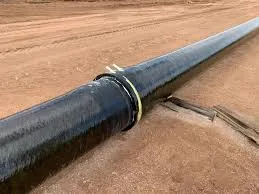
-
 Afrikaans
Afrikaans -
 Albanian
Albanian -
 Amharic
Amharic -
 Arabic
Arabic -
 Armenian
Armenian -
 Azerbaijani
Azerbaijani -
 Basque
Basque -
 Belarusian
Belarusian -
 Bengali
Bengali -
 Bosnian
Bosnian -
 Bulgarian
Bulgarian -
 Catalan
Catalan -
 Cebuano
Cebuano -
 China
China -
 China (Taiwan)
China (Taiwan) -
 Corsican
Corsican -
 Croatian
Croatian -
 Czech
Czech -
 Danish
Danish -
 Dutch
Dutch -
 English
English -
 Esperanto
Esperanto -
 Estonian
Estonian -
 Finnish
Finnish -
 French
French -
 Frisian
Frisian -
 Galician
Galician -
 Georgian
Georgian -
 German
German -
 Greek
Greek -
 Gujarati
Gujarati -
 Haitian Creole
Haitian Creole -
 hausa
hausa -
 hawaiian
hawaiian -
 Hebrew
Hebrew -
 Hindi
Hindi -
 Miao
Miao -
 Hungarian
Hungarian -
 Icelandic
Icelandic -
 igbo
igbo -
 Indonesian
Indonesian -
 irish
irish -
 Italian
Italian -
 Japanese
Japanese -
 Javanese
Javanese -
 Kannada
Kannada -
 kazakh
kazakh -
 Khmer
Khmer -
 Rwandese
Rwandese -
 Korean
Korean -
 Kurdish
Kurdish -
 Kyrgyz
Kyrgyz -
 Lao
Lao -
 Latin
Latin -
 Latvian
Latvian -
 Lithuanian
Lithuanian -
 Luxembourgish
Luxembourgish -
 Macedonian
Macedonian -
 Malgashi
Malgashi -
 Malay
Malay -
 Malayalam
Malayalam -
 Maltese
Maltese -
 Maori
Maori -
 Marathi
Marathi -
 Mongolian
Mongolian -
 Myanmar
Myanmar -
 Nepali
Nepali -
 Norwegian
Norwegian -
 Norwegian
Norwegian -
 Occitan
Occitan -
 Pashto
Pashto -
 Persian
Persian -
 Polish
Polish -
 Portuguese
Portuguese -
 Punjabi
Punjabi -
 Romanian
Romanian -
 Russian
Russian -
 Samoan
Samoan -
 Scottish Gaelic
Scottish Gaelic -
 Serbian
Serbian -
 Sesotho
Sesotho -
 Shona
Shona -
 Sindhi
Sindhi -
 Sinhala
Sinhala -
 Slovak
Slovak -
 Slovenian
Slovenian -
 Somali
Somali -
 Spanish
Spanish -
 Sundanese
Sundanese -
 Swahili
Swahili -
 Swedish
Swedish -
 Tagalog
Tagalog -
 Tajik
Tajik -
 Tamil
Tamil -
 Tatar
Tatar -
 Telugu
Telugu -
 Thai
Thai -
 Turkish
Turkish -
 Turkmen
Turkmen -
 Ukrainian
Ukrainian -
 Urdu
Urdu -
 Uighur
Uighur -
 Uzbek
Uzbek -
 Vietnamese
Vietnamese -
 Welsh
Welsh -
 Bantu
Bantu -
 Yiddish
Yiddish -
 Yoruba
Yoruba -
 Zulu
Zulu
fiberglass stack liner
Understanding Fiberglass Stack Liners Applications and Benefits
Fiberglass stack liners are specialized components designed to enhance the efficiency and longevity of industrial stacks, which are crucial in the emission of gases from various facilities, including power plants and manufacturing units. These liners serve several key purposes, primarily focusing on protecting the stack structure from the corrosive effects of gases and improving overall operational performance.
One of the primary advantages of fiberglass stack liners is their exceptional resistance to corrosion. Traditional stack materials, such as steel and concrete, may degrade over time due to exposure to acidic and alkaline substances in flue gases. This deterioration can lead to costly repairs and potential environmental hazards. In contrast, fiberglass is inherently resistant to such corrosive agents, thereby extending the lifespan of the stack and significantly reducing maintenance costs.
Additionally, fiberglass stack liners are lightweight compared to their metal counterparts. This feature not only simplifies the installation process but also reduces the structural load on the stack and its supporting elements. As a result, industries can achieve significant savings in construction and installation costs. The ease of handling and installation also allows for quicker project timelines, which is a crucial factor in many industrial operations.
fiberglass stack liner

Another prominent benefit of fiberglass stack liners is their thermal insulation properties. They help maintain optimal temperatures inside the stack, minimizing the risk of condensation that can lead to corrosion and other damage. This insulation capability enhances the overall efficiency of exhaust systems, enabling better energy management and contributing to more sustainable operational practices.
Industries utilizing fiberglass stack liners also benefit from improved emissions control. By providing a more durable barrier within the stack, these liners help facilitate better filtering of pollutants, thereby assisting companies in adhering to environmental regulations. In an age where regulatory compliance is paramount for operational viability, incorporating fiberglass stack liners can aid businesses in maintaining their commitment to sustainable practices.
In conclusion, fiberglass stack liners represent a robust solution for industries looking to enhance the durability and efficiency of their emission stacks. With their excellent resistance to corrosion, lightweight design, thermal insulation capabilities, and contribution to emissions control, these liners not only improve operational performance but also support sustainable practices. As industries continue to prioritize both efficiency and environmental responsibility, the adoption of fiberglass stack liners is likely to become increasingly prevalent.
Latest news
-
Exploring the Benefits of Top Hammer Drifter Rods for Enhanced Drilling PerformanceNewsJun.10,2025
-
High-Precision Fiberglass Winding Machine for GRP/FRP Pipe Production – Reliable & Efficient SolutionsNewsJun.10,2025
-
FRP Pipes & Fittings for Shipbuilding - Corrosion-Resistant & LightweightNewsJun.09,2025
-
Premium FRP Flooring Solutions Durable & Slip-ResistantNewsJun.09,2025
-
Premium Fiberglass Rectangular Tanks Durable & Lightweight SolutionNewsJun.09,2025
-
Tapered Drill String Design Guide Durable Performance & UsesNewsJun.09,2025









